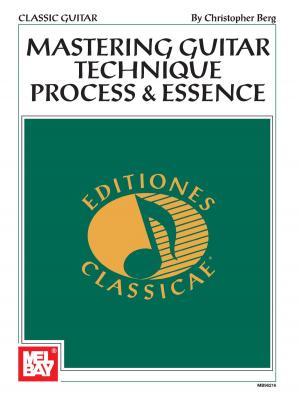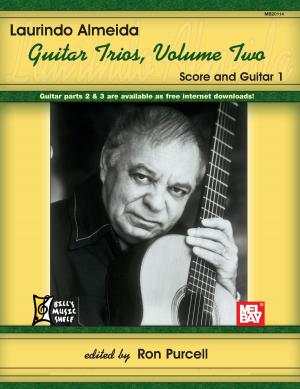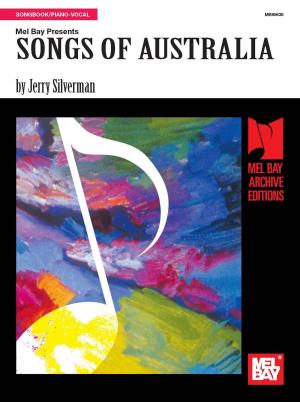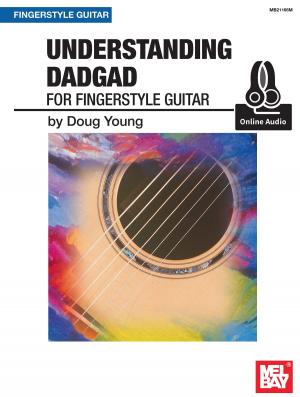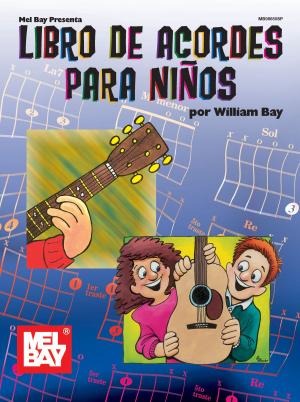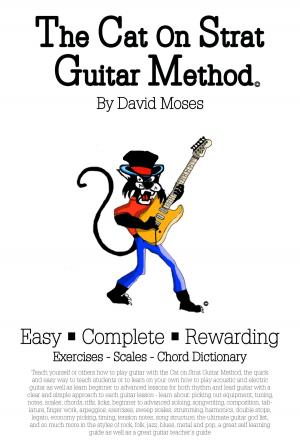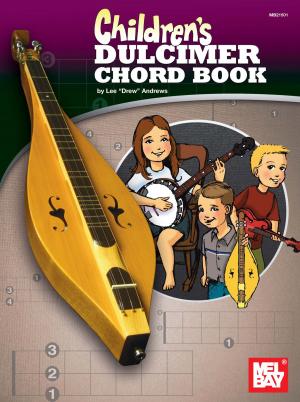GUITAR Mechanics
Nonfiction, Entertainment, Music, Instruments & Instruction, Guitar, General Instruments| Author: | Terry Relph-Knight | ISBN: | 9780956978011 |
| Publisher: | Acoustic Masters | Publication: | August 1, 2011 |
| Imprint: | Language: | English |
| Author: | Terry Relph-Knight |
| ISBN: | 9780956978011 |
| Publisher: | Acoustic Masters |
| Publication: | August 1, 2011 |
| Imprint: | |
| Language: | English |
If you have ever wondered why music is constructed the way it is, or why the guitar and other stringed instruments are made the way they are, then GUITAR Mechanics is the book is for you. Packed with facts and little known information, in addition to the specifically guitar related information, the book also contains many references to sources of useful accessories for the guitarist, mandolin and banjo player, such as strings, capos, picks and slides. Based on a series of previously published articles, GUITAR Mechanics covers the construction and function of the guitar, from top to bottom, inside and out. Although the articles were written principally about the acoustic instrument, since the electric guitar developed from the acoustic guitar, much of the text also has relevance to the electric instrument. The original articles have been updated, extended and combined with new and previously unpublished sections. The design and construction of musical instruments embodies elements of history, art, culture, science and craftsmanship. Musical instruments have developed over thousands of years and are still doing so, almost without anyone really noticing. At the same time ideas about music are changing and becoming more complex. Even popular musical forms now commonly use techniques and sounds from electronic music and musique concrete that were originally invented by the avant-garde in the 1940’s. It is often said that there is something special about the guitar as an instrument and there are good reasons for this sentiment. The majority of stringed instruments have four strings or four courses, as indeed did the early guitars. The fairly recent addition of the two extra bass strings has made it possible to play bass lines, chords and melody lines on the guitar, seemingly at the same time. Over the course of the past several decades guitarists have explored the extra range of the guitar and taken its capacity to produce complex music to higher and higher levels. Some have even added further strings or used alternate tunings to extend the range still further. Although some guitarists are of the opinion that it is better to focus on actually playing music rather than constantly obsessing over the instrument you play, in practice a clear understanding of how an instrument works and how it produces the sounds it does can be extremely valuable to the musician. Many of the greatest and most innovative musicians and composers have used their understanding of how instruments work to modify their instruments, or even to design new instruments to enable their playing techniques and to obtain the sounds they imagine (for example - the harp guitar, the seven and ten string guitar and the Chapman Stick). All these themes are explored throughout the book which contains my perspective on the construction of the acoustic guitar and how it works as a mechanism for producing music. A promotional video for GUITAR Mechanics is available on YouTube – search for ResoBridge.
If you have ever wondered why music is constructed the way it is, or why the guitar and other stringed instruments are made the way they are, then GUITAR Mechanics is the book is for you. Packed with facts and little known information, in addition to the specifically guitar related information, the book also contains many references to sources of useful accessories for the guitarist, mandolin and banjo player, such as strings, capos, picks and slides. Based on a series of previously published articles, GUITAR Mechanics covers the construction and function of the guitar, from top to bottom, inside and out. Although the articles were written principally about the acoustic instrument, since the electric guitar developed from the acoustic guitar, much of the text also has relevance to the electric instrument. The original articles have been updated, extended and combined with new and previously unpublished sections. The design and construction of musical instruments embodies elements of history, art, culture, science and craftsmanship. Musical instruments have developed over thousands of years and are still doing so, almost without anyone really noticing. At the same time ideas about music are changing and becoming more complex. Even popular musical forms now commonly use techniques and sounds from electronic music and musique concrete that were originally invented by the avant-garde in the 1940’s. It is often said that there is something special about the guitar as an instrument and there are good reasons for this sentiment. The majority of stringed instruments have four strings or four courses, as indeed did the early guitars. The fairly recent addition of the two extra bass strings has made it possible to play bass lines, chords and melody lines on the guitar, seemingly at the same time. Over the course of the past several decades guitarists have explored the extra range of the guitar and taken its capacity to produce complex music to higher and higher levels. Some have even added further strings or used alternate tunings to extend the range still further. Although some guitarists are of the opinion that it is better to focus on actually playing music rather than constantly obsessing over the instrument you play, in practice a clear understanding of how an instrument works and how it produces the sounds it does can be extremely valuable to the musician. Many of the greatest and most innovative musicians and composers have used their understanding of how instruments work to modify their instruments, or even to design new instruments to enable their playing techniques and to obtain the sounds they imagine (for example - the harp guitar, the seven and ten string guitar and the Chapman Stick). All these themes are explored throughout the book which contains my perspective on the construction of the acoustic guitar and how it works as a mechanism for producing music. A promotional video for GUITAR Mechanics is available on YouTube – search for ResoBridge.

